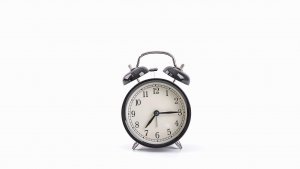With the right approach, data, and tools, communication and productivity become two sides of the same coin, adding maximum value to your business.
Big Data Productivity Hacks For Your Next Company Call
With the right approach, data, and tools, communication and productivity become two sides of the same coin, adding maximum value to your business.

Whether you’re managing a business, a project or just a small team, effective communication is vital. Unfortunately, in an era defined by flexible working, disparate workforces and international workflows, it’s harder than ever to maintain an effective dialogue with every member of your team.
At the same time, putting in the effort to maintain this dialogue can become a full-time job in its own right. We all know the feeling; jumping from meeting to meeting and call to call, discussing all the things we plan to achieve… if only we had spent the time doing instead of discussing.
It’s a fine balance to strike – collaboration vs productivity. Those that focus solely on collaboration don’t get anything done, while those that focus on being productive leave their teams behind and head off in a direction that doesn’t reflect the team’s wider goals.
The secret, of course, is that in order to be successful you need a mixture of both. You need to collaborate and communicate effectively, but you must do so in the most productive way. There’s nothing wrong with holding meetings or joining calls — as long as they prove productive and add genuine value to both your day and the wider business.
So how do you ensure that your meetings and corporate calls are adding value without becoming a drain on time or resources?
That’s the question that Fuze wanted to answer in its recent Productivity @ Work study. Using a big data analysis of unified communications (UC) use in the workplace, Fuze examined engagement with the Fuze platform, including 2.5 million meetings, 20 million calls and 33 million messages.
This colossal data set incorporated employees working across the UK, USA, Australia, Canada, Denmark, France, Germany, India, Italy, Norway, Spain and Sweden — providing one of the largest studies on UC productivity ever conducted.
Through this analysis, Fuze’s data scientists identified some key productivity hacks to help ensure that calls and collaboration efforts are as efficient as humanly possible. Here are three of the things we found out
Don’t go over the hour
Productivity slumps when meetings run for over an hour. In fact, 26% of employees will drop out if a meeting runs over 60 minutes. As these participants drop off the call, the effectiveness of the call inevitably reduces, with alternative voices and opinions being lost.
These drop offs also result in additional emails and follow up calls will need to be arranged, updating those that had to leave early, clarifying their actions and seeking their approval of what had been discussed. All of this represents additional work and lost time for the business.
As such, it’s far better to keep calls under 60 minutes. Expect to cover less ground, but you’ll make sure that everyone is present, receives a full update and knows what is expected of them.
Make the most of video
Our analysis found that the effectiveness and productivity of calls increased significantly when participants joined via video or offered to share their screens. When users turn on their video or screenshare during meetings, 87% of the attendees stay connected. Without screenshare, only 75% will remain connected to the meeting.
Video ensures that those joining the call are engaged and paying attention. It also limits the opportunity to do other work ‘in the background’.
While multitasking in this way may feel productive, it actually divides your attention, meaning important information is likely to be missed. This can lead to yet more unnecessary communication and repetition further down the line.
Aim for 25 minutes or 50 minutes
Across all countries in our study, no average meeting length came out at exactly 30 or 60 minutes. Many of us like to take five minutes between calls, grabbing a cup of coffee or quickly checking emails before we join. The result, however, is that several other members of staff end up sitting on an empty call for five minutes waiting for it to start.
Instead of defaulting to 30- and 60-minute meetings, consider switching your calendar settings to 25 and 50 minutes to improve meeting efficiency.
Not only will this increase the likelihood of meetings starting on time, it will also give employees an opportunity to check emails, refill their coffee cups, and have a moment to re-energize on days booked full of meetings.
The result will be less waiting around, but also more productive calls with better prepared, more energized discussions.
Tip of the iceberg…
When it comes to running productive meetings and calls, these hacks are just the tip of the iceberg, with many more opportunities emerging from Fuze’s big data study.
What’s most important for businesses to remember, is the idea that small changes can make a big different to productivity, employee motivation and the bottom line. Whether it’s small changes to the way we communicate, the structure of our calls, or even the communications technology we use, constant improvement is vital to business success.
Bradlee Allen is product evangelist at Fuze.
Thanks for signing up to Minutehack alerts.
Brilliant editorials heading your way soon.
Okay, Thanks!

